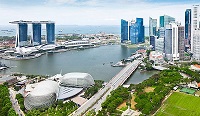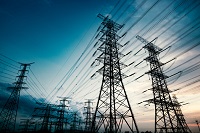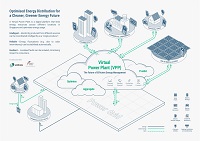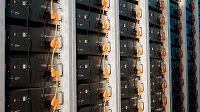Speeches
28 Oct 2025
Excellencies and Distinguished Guests,
Ladies and Gentlemen,
- Welcome to the Asia Clean Energy Summit, held as part of the Singapore International Energy Week.
- Each year, SIEW brings together leaders, innovators, and experts from across the world. All of you have diverse experiences, shaped by your countries’ energy systems, resource endowments and operating environments. But we have the same goal – to navigate the energy transition successfully and build a secure and sustainable energy future for our children and grandchildren.
- Yesterday, Minister-in-charge of Energy and Science & Technology Dr Tan See Leng spoke about the four interconnected pillars of Singapore’s energy transition strategy, ‘S-I-E-W’: (a) Sustainable pathways, (b) Inter-connectivity, (c) Ecosystem resilience, and (d) Workforce capabilities.
- Today, I will focus on the “I” of inter-connectivity. Let me share three ways that Singapore is working with our partners to accelerate the region’s energy transition – connectivity through the ASEAN Power Grid, connectivity through capability building, and connectivity through public-private collaboration.
- First, connectivity through the ASEAN Power Grid. This is the cornerstone of ASEAN’s energy transition, as it will unlock our region’s wealth of renewable energy, catalyse new green jobs and investments, as well as enhance energy access and grid resilience. I am heartened that this vision is not only shared within ASEAN, but is increasingly drawing in strong interest from governments, financial institutions, and companies from beyond our region.
- We are making progress on real projects that will form the building blocks of the ASEAN Power Grid. Two weeks ago, Singapore’s Energy Market Authority (EMA) awarded a Conditional Approval to Sembcorp Utilities, which is partnering Sarawak Energy Berhad to import 1GW of hydropower from Sarawak. This is Singapore’s first Conditional Approval for large-scale electricity imports from Malaysia, and brings us to a total of about 8GW of potential projects from our region, including from Indonesia, Vietnam, Cambodia and Australia.
- We are also working hard with our partners to set up the infrastructure, institutions, and regulatory frameworks needed to kickstart project development.
- On infrastructure, Singapore and Malaysia will soon commence detailed feasibility studies for a second electricity interconnector between Singapore and Peninsular Malaysia – more than 40 years after our first interconnector was built. This new interconnector could support up to 2 GW of bidirectional electricity flows by 2030 and could one day bring in power not only from Malaysia, but also the rest of Southeast Asia.
- On institutions, because interconnectors are central to the future of the ASEAN Power Grid, the Government has appointed Singapore Energy Interconnections (SGEI) to invest in, develop, own and operate our interconnectors. SGEI was set up in April this year, and it will play a role in supporting the bankability of interconnector investments needed to advance the APG.
- On regulatory frameworks, earlier this month, the ASEAN Energy Ministers endorsed the Terms of Reference for a Submarine Power Cables Development Framework. This recognises that we need to go beyond ASEAN’s existing overland interconnections, and open up new subsea routes to create a more inclusive and resilient regional grid. ASEAN is now poised to start work on the actual Framework, which will facilitate the conduct of subsea surveys and the laying, maintenance and protection of subsea power cables in our part of the world.
- But ASEAN need not start from scratch. We can look to Europe, where subsea power cables spanning multiple jurisdictions are commonplace, as well as to ASEAN’s own practices on submarine telecoms cables. Singapore will also continue to welcome insights from partners beyond ASEAN. This is why we launched a Cross-Border Electricity Trade Framework with Australia earlier this month, which seeks to establish a reference point for norms and best practices related to cross-border electricity trade in the region.
- With these infrastructural developments, institutional appointments, and regulatory frameworks in place, we can strengthen ASEAN’s capabilities to meet our target of realising the ASEAN Power Grid by 2045.
- Let me now elaborate on the second form of Connectivity: Capability Building. Building connectivity is not only about physical interconnections between countries. It is also about levelling up our knowledge and skills collectively and investing in human capital, to ensure that our region’s energy transition is inclusive and people-centric.
- Partners such as the International Energy Agency (IEA) and the International Renewable Energy Agency (IRENA) are central to these efforts.
- Those of you who attended last year’s SIEW will recall that we launched the IEA Regional Cooperation Centre in Singapore then, as the IEA’s first regional office outside its Paris headquarters. The Centre has gotten off to a strong start in its first year, building connections with a wide range of regional stakeholders, and publishing relevant research related to low-carbon energy technologies such as hydrogen, solar and wind. In May, the Centre also co-hosted the 9th Singapore–IEA Regional Training Programme, bringing together more than 200 policymakers and industry leaders from the region. We also welcome the Centre’s collaboration with the ASEAN Centre for Energy on the ASEAN Energy Security Review, which will review how best to create secure, affordable, reliable and sustainable energy supplies for the region.
- As for IRENA, it will shortly be unveiling the Accelerated Partnership for Renewable Energy in Southeast Asia, or APRESA. The partnership aims to build the capabilities of Southeast Asian countries to increase renewable energy deployment in key industries; implement decentralised renewable energy solutions for remote islands, upskill and reskill local technicians, and conduct project finance training to support renewable energy projects. Singapore supports this initiative, as a concrete step by IRENA to support our region’s energy needs. I will leave the details to be shared at the Singapore-IRENA High-Level Forum later today.
- Our collaborations with IEA and IRENA reflects Singapore’s conviction that no country can embark on the energy transition alone, and we can go faster if we progress together.
- Governments can set the direction for the region’s energy transition, but companies drive the change by investing capital, deploying solutions, and bringing new products to market. Governments must thus create a facilitative environment for companies to pursue decarbonisation pathways and accelerate our push towards net-zero. This brings me to the final part of my speech – Connectivity through Public-Private Collaboration.
- First, we must maximise the value of green electrons, so as to support the commercial viability of renewable energy projects. Many companies have shared that they need Renewable Energy Certificates (RECs) to provide proof that the electricity they consume has been generated from renewable energy sources, so that they can credibly fulfil their sustainability commitments. Today, there are systems in place for RECs generated and claimed within the same country. But with the establishment of the ASEAN Power Grid, we similarly need a framework for RECs that are traded across borders.
- In this regard, I am pleased to announce that MTI and EMA, together with the International Tracking Standard Foundation, have jointly developed a draft Cross-Border REC Framework. This provides a structured template for countries to demonstrate the credible tracking and accounting of RECs associated with cross-border electricity trade. The framework takes reference from international best practices and can be adapted to suit the operating context of different markets in Southeast Asia. This framework can also serve as a pathfinder project to complement ongoing efforts to develop an ASEAN Regional REC Framework. I am heartened that the framework has already been supported by like-minded organisations across the renewable energy ecosystem including the Climate Group’s RE100 initiative, ASEAN Centre for Energy, Asia Clean Energy Coalition, and the global microelectronics industry association, SEMI.
- Beyond establishing a framework for RECs, Singapore is also helping companies tap on carbon markets to meet their sustainability commitments. The voluntary carbon market has faced headwinds in recent years. Concerns about the integrity, transparency and quality of voluntary carbon credits have eroded confidence, while inconsistent standards and negative publicity have raised reputational concerns. As a result, many companies have hesitated to use voluntary carbon credits to meet their climate commitments or as part of their decarbonisation plans.
- To strengthen trust and promote credible participation in the voluntary carbon market, I am pleased to announce several new initiatives:
- First, the publication of a Voluntary Carbon Market Guidance document, developed by the government in consultation with industry. This provides guidance on how companies can use voluntary carbon credits as part of their decarbonisation plans;
- Second, EnterpriseSG is engaging leading Asian corporates to form an industry-led Buyers’ Coalition to aggregate and channel demand for high-integrity voluntary carbon credits in the region and beyond;
- Third, the Monetary Authority of Singapore is introducing a Financial Sector Carbon Market Development Grant, to catalyse financial sector participation across the carbon value chain. The Grant will defray manpower and transaction costs from financing, underwriting, and trading of carbon credit projects.
- Finally, Singapore is now home to the Integrity Council for the Voluntary Carbon Market, a global body that sets standards to ensure voluntary carbon credits are of high quality. Formed in 2021, the ICVCM has always been a virtual global entity, and its decision to set up its first physical office in Singapore showcases Singapore’s emerging role as a trusted carbon services hub in the Asia-Pacific. For a start, the ICVCM’s new office will focus on improving standards for transition credits from retiring young coal-fired plants in Southeast Asia.
- In closing, at a time where global climate ambition is coming under increasing challenge, Singapore’s partnerships with like-minded partners are more important than ever. A more resilient, sustainable and inclusive energy future for Southeast Asia is well within reach – and we can get there if we continue our strong collaborations on the ASEAN Power Grid, capability building, and public-private partnerships. I look forward to working closely with all our partners here as we press on together with this groundbreaking work to tackle the existential challenge of climate change.
- Thank you.
Connectivity through the ASEAN Power Grid
Connectivity through Capability Building
Connectivity through Public-Private Collaboration
Conclusion















